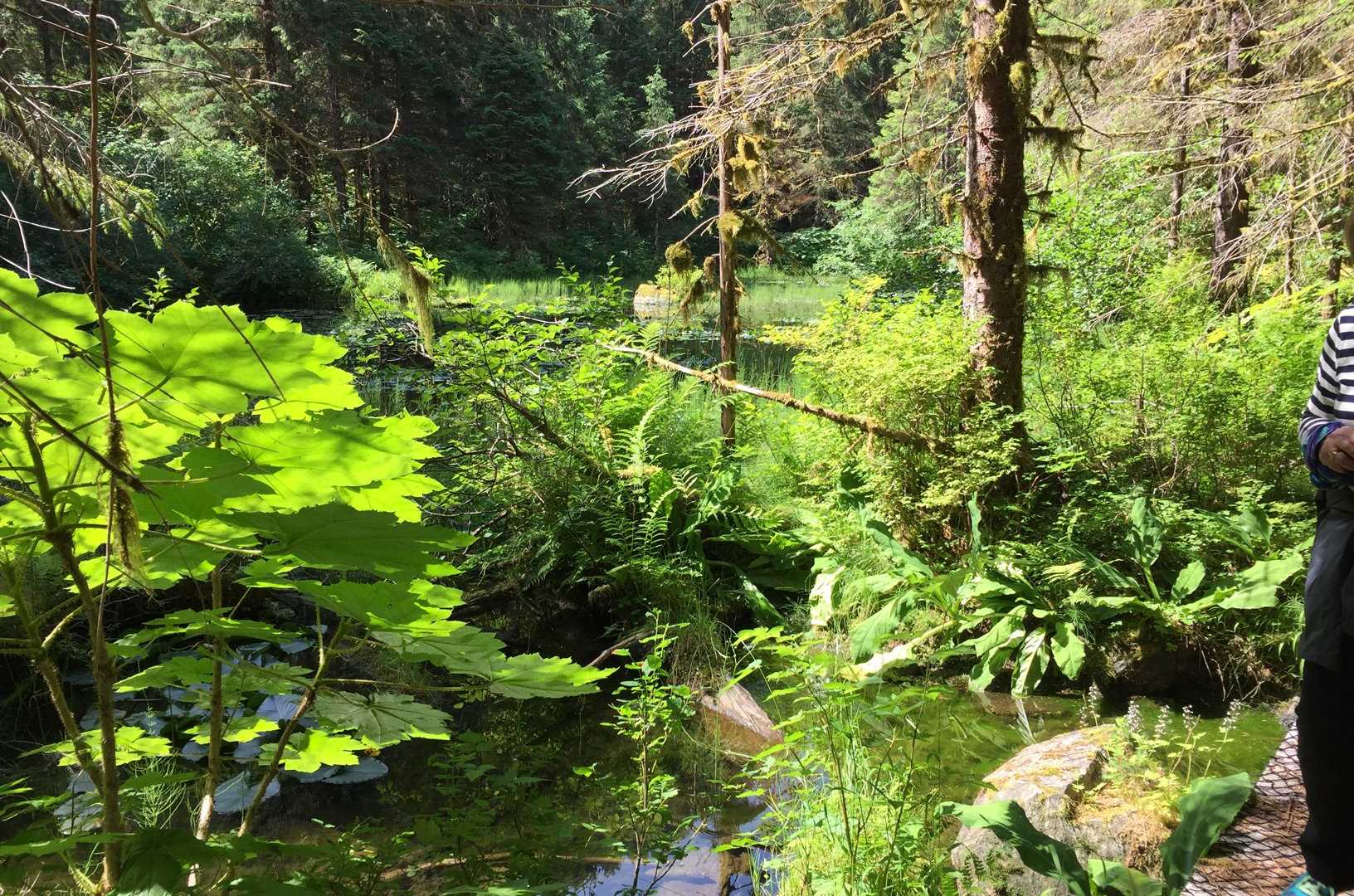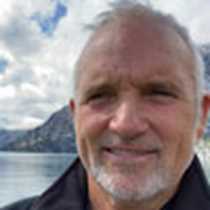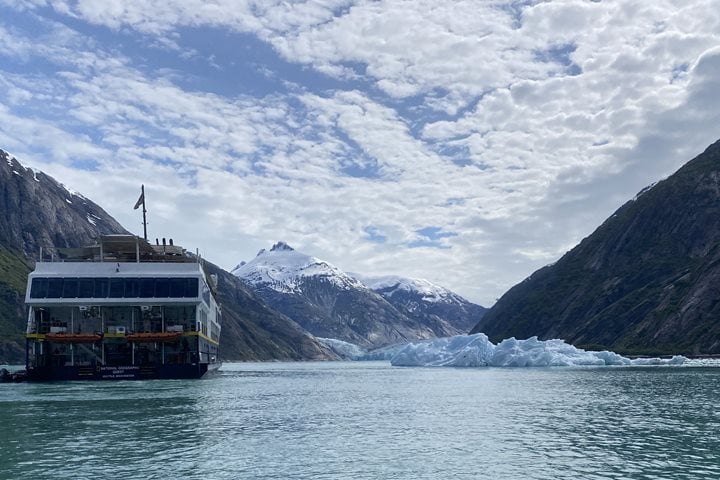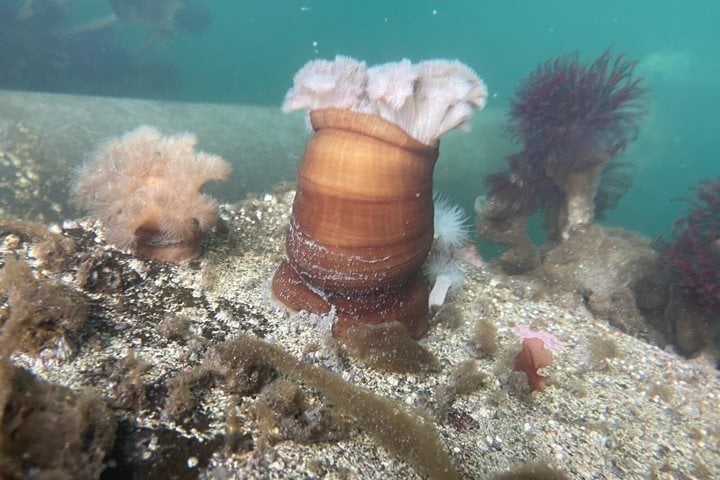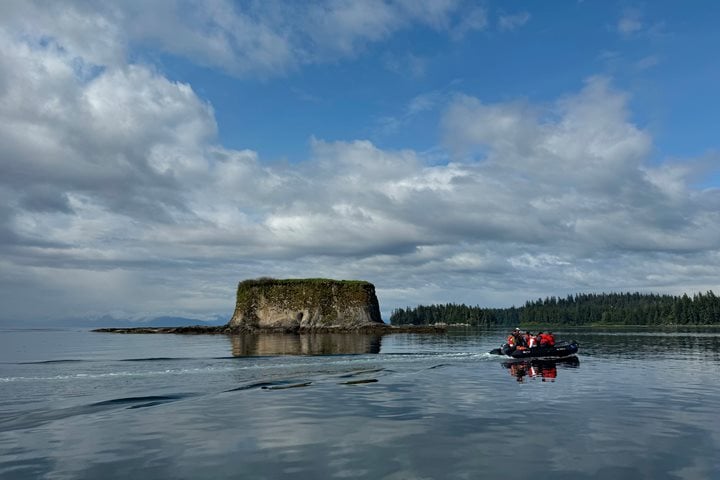Another beautiful day dawned as we sailed south toward our morning anchorage in the quiet water off the northeast coast of Baranof Island. After morning stretch and breakfast, we boarded our expedition landing craft to begin our adventures on and off the island. Groups dividing into kayakers, hikers, and cruisers took advantage of a remarkable sunny day to explore the habitat of a rich salmon spawning stream and its environs. The long hikers reached the eastern edge of Lake Eva where a small stand of old growth forest remains near the water’s edge. Enormous Sitka spruce trees nearly ten feet in diameter and over 500 years old remind us of how the Tongass National Forest looked without the scars of modern clear-cut logging. Along the way we saw energetic red squirrels eating and storing the seeds of the spruce. Piles of seed casings litter the base of the trees. A belted kingfisher flew past and roosted on the branch of a western hemlock tree holding a small fish in its beak. We passed fishermen carrying a large sockeye salmon caught in the stream and many fish were seen jumping from the water, no doubt feeding on insects flying near the surface.
Our chef and hotel manager produced a special treat for our return to National Geographic Sea Bird; lunch was served as an outdoor barbecue to take advantage of an incredible day of sunshine. After lunch and National Geographic Sea Bird’s global market, we cruised south in Chatham Strait and listened to two dynamic speakers who shared their knowledge and passion for Alaskan art and wildlife. Shipboard naturalist David Stephens spoke on the art and culture of Alaskan natives and Andy Szabo shared his research on whales in Southeast Alaska. Both speakers informed and enlightened us with their information and enthusiasm.
Winds were fresh with moderate seas as we sailed south toward Red Bluff Bay along the east coast of Baranof Island. The narrow fjord, located due west of Frederic Sound provides a sheltered refuge from the wind and waves. Sea Bird sailed slowly into the bay and we were rewarded with stunning views of the forest, waterfalls, and the strange tree-less exposures of reddish rock that gives the bay its name. These rocks produce soils rich in magnesium that stunt the growth of native plants and trees so common to Southeast Alaska. Geologist believe these “ultra-mafic” rocks represent a small, exhumed piece of the Earth’s mantle carried to the surface and exposed by the effects of tectonic accretion, uplift, and erosion over millions of years. The rocks are a small piece of the geologic puzzle that makes up the extraordinary story of Alaskan geology.

